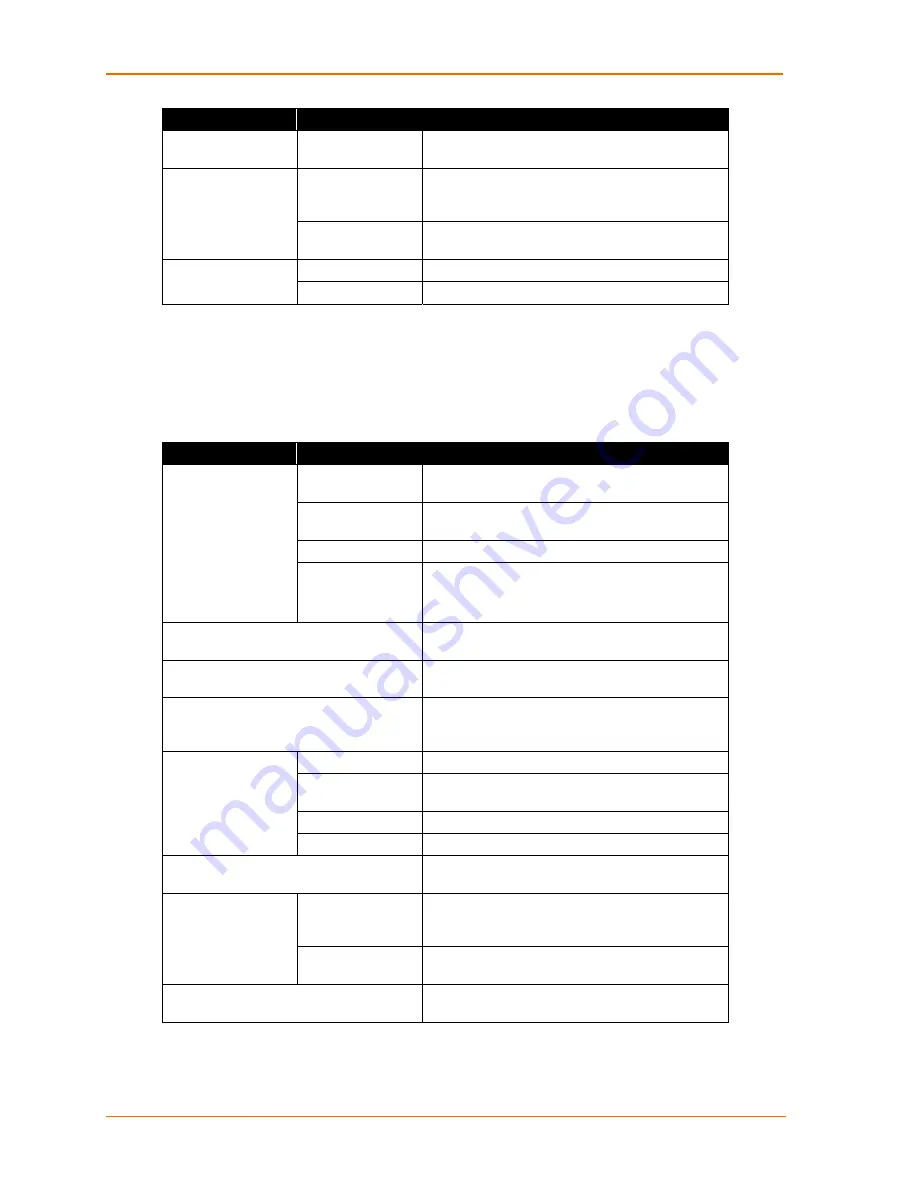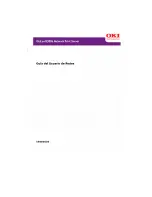
Frequently-Used Commands
64
ETS Installation Guide
Command
Option(s)
Description
COUNTERS
Displays characteristics related to the various
counters kept by the ETS.
<nothing>
Displays characteristics about all configured
services once (Show) or continually every three
seconds (Monitor).
{SHOW/MONITOR}
SERVICE option
“service”
Displays only characteristics related to the
named service.
ALL
Zeroes all port, node, and server counters.
ZERO COUNTERS
option
PORT num
Zeroes port counters for the specified port.
Port Commands
In the following commands, “2” can be a single port number, a list of port numbers
separated by commas, a range of port numbers separated by dashes, or the word all.
Table F-2. Frequently-used Port Commands
Command
Option(s)
Description
DYNAMIC
The port can initiate and receive connection
requests.
LOCAL
The port can initiate connection requests, and
local logins are permitted.
NONE
The port is unusable.
DEFINE PORT 2
ACCESS option
REMOTE
The port can receive host-initiated connection
requests.
DEFINE PORT 2 CHARACTER size
Toggles the port between 7-bit and 8-bit
characters (the default). Enter either 7 or 8.
DEFINE PORT 2 DSRLOGOUT
{EN/DIS}
When Enabled, the port will be logged out
automatically whenever DSR is de-asserted.
DEFINE PORT 2 DTRWAIT {EN/DIS}
When Enabled, the ETS will not assert DTR on
the port when it is idle (no user logins or
connections).
CTS
Specifies CTS/RTS (hardware) flow control.
{EN/DIS}
Activates or deactivates the currently-configured
flow-control method.
NONE
Removes the current flow control settings.
DEFINE PORT 2
FLOW option
XON
Specifies XON/XOFF (software) flow control.
DEFINE PORT 2 NAME “newname”
Enter a name of up to 16 alphanumeric
characters for the specified port.
parity
Enter even, odd, mark, or space. Specifying
mark or space will change the character size to
7 bits.
DEFINE PORT 2
PARITY option
NONE
Specifies that no parity will be used (the
default).
DEFINE PORT 2 SPEED baudnum
Sets the port’s baud rate. Acceptable baudnum
values range from 300 to 230000 baud.





































